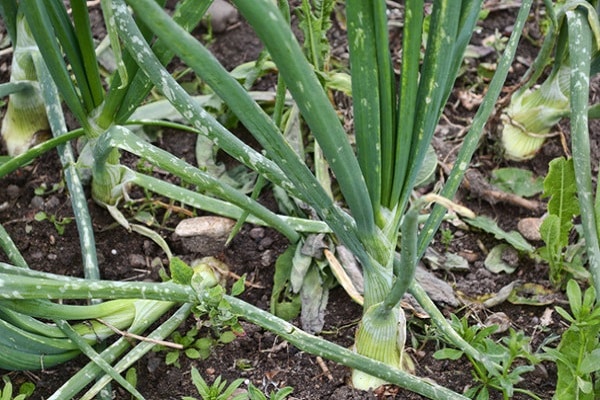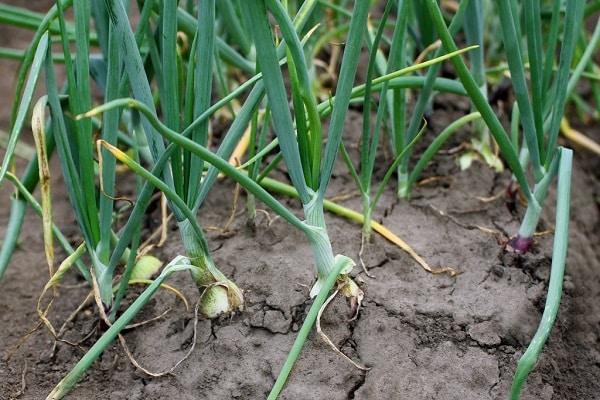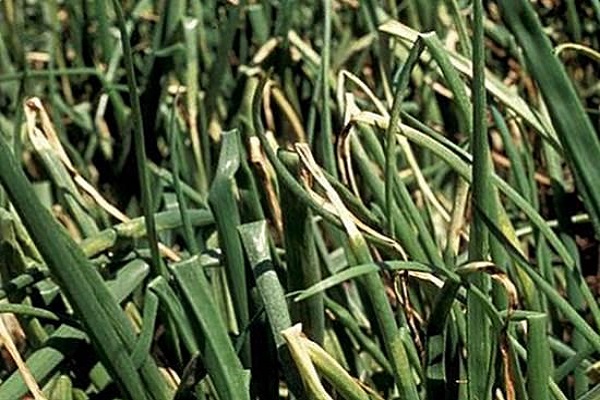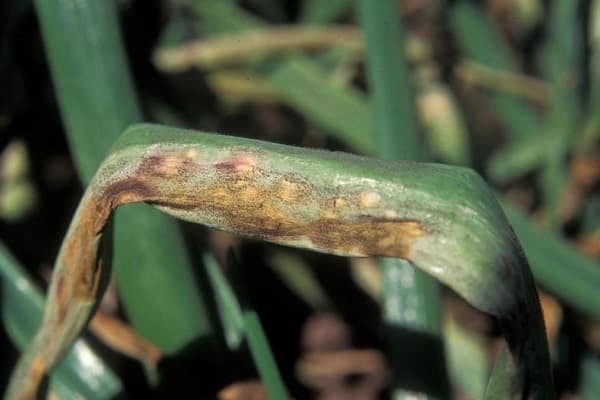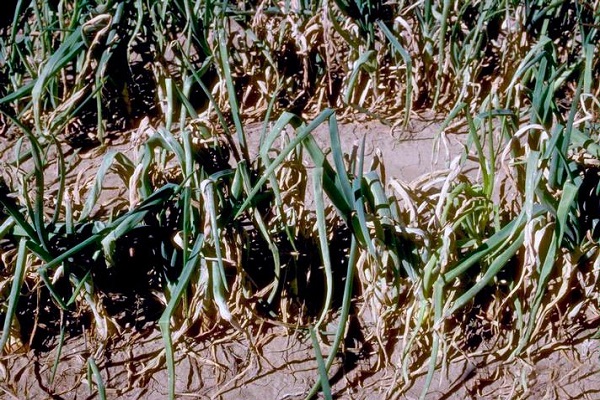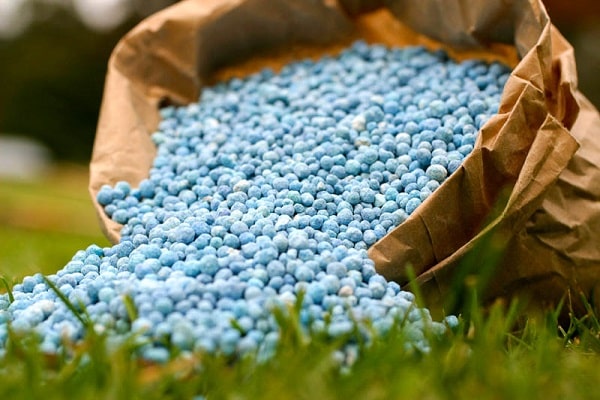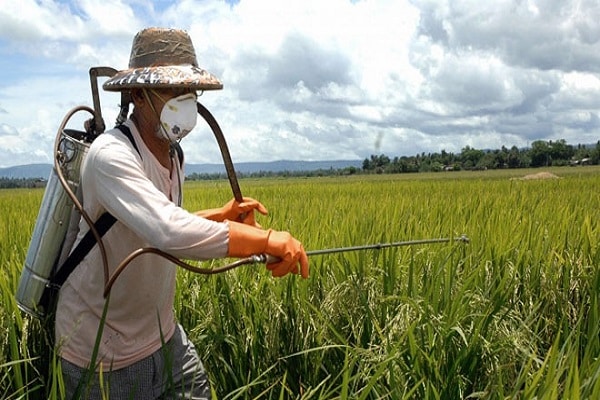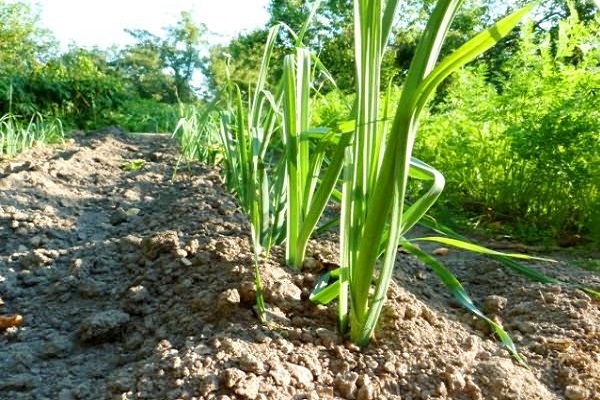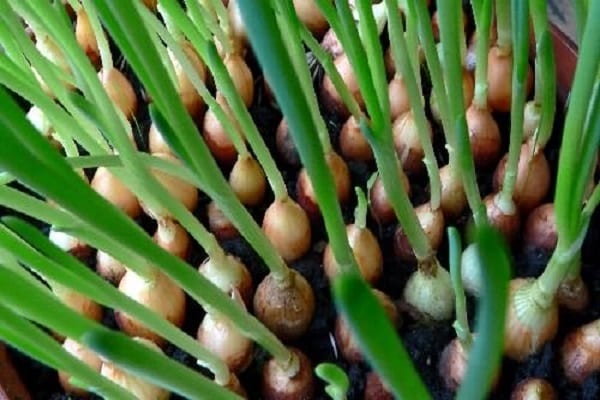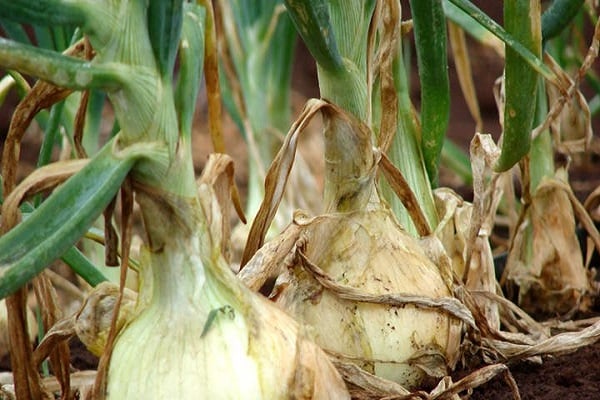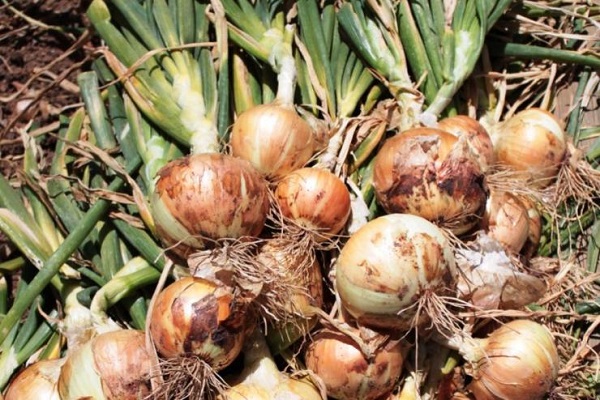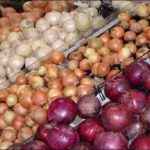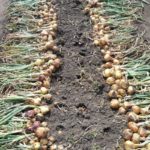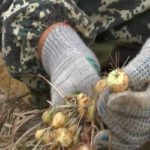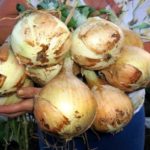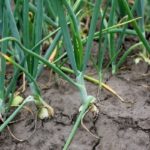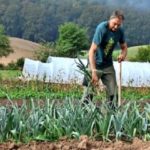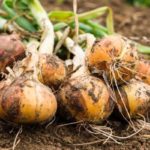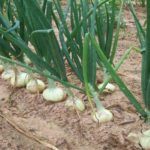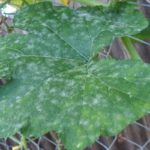Onion downy mildew is a fungal disease that often affects the plant at any stage of its ripening. Onions can become infected with the fungus every year, since the spores overwinter either in the soil or on the bulb without causing it to rot. This disease is widespread and a big problem for many farmers, so you need to know what to do if your onions are affected by downy mildew.
Description of the disease
Downy mildew (downy mildew on onions) has this name because of the gray-violet coating on the “feathers” of the plant.
Downy mildew on onions, the photo of which makes it possible to see possible manifestations of the fungus, does not appear until planting.This makes it unrealistic to select unsuitable planting material. The disease develops quickly, and the more severe the damage, the more additional symptoms you may notice.
The following signs and stages of disease development are distinguished:
- The earliest manifestations of downy mildew can be noticed in the second half of April - early May, when small yellow spots appear on the leaves and peduncles. And after some time, gray-purple fungal spores appear on infected plants.
- Powdery plaque is best visible in the morning, when the beds are covered with dew.
- As the disease progresses, the spots on the leaves increase. Onion feathers become fragile. Over time, they sink to the ground and wither. The plant looks sick.
- Due to the penetration of infection deep into the bulb, the culture cannot develop normally. If flower stalks are infected, the seeds often do not ripen.
A fungal disease can destroy up to 50% of the onion harvest, so you need to know not only how downy mildew manifests itself, but also the main conditions under which the disease occurs.
Downy mildew infection
The main conditions for the development of false dew are a sharp change in temperature and high humidity in the morning, that is, dew retention. During dry summer periods, the fungus is less common. Downy mildew on onions develops if the temperature drops to +16 °C and the humidity rises to 90-100%.
Such weather conditions are observed at night, in spring and early summer. At this time, the spores awaken, and when the sun rises and the air temperature becomes higher (but the dew has not yet evaporated), they begin to develop intensively.
The incubation period of peronosporosis lasts from 3 to 15 days, and during the season the fungi develop up to 6 generations.
Favorable conditions for onions to contract peronosporosis are a lack of fresh air and sunlight. Therefore, it is necessary to choose the right place for the beds and not plant the plant too densely.
To plant onions, agronomists recommend choosing those areas of the garden where sunlight enters unhindered. It is better to place the beds away from moisture and shade, since constant dampness and lack of sunlight are excellent conditions for the spread of fungus. Spores are carried with air currents and with drops of water during rain or heavy watering.
The fungus often remains in the soil along with onion residues after harvesting last year's infected crop. To prevent a new infection, it is recommended to change the place where the vegetable is planted.
Treatment options
If signs of fungus are found on the plant, it is necessary to abandon organic fertilizers and switch to phosphorus-potassium fertilizers. Since onion downy mildew develops well in high humidity, it is recommended to reduce watering when symptoms are detected.
In the fight against the disease, chemical and folk remedies are used to treat the affected areas. During the growing season, onions can be sprayed with fungicides, but after treatment, green feathers are prohibited from being eaten.
The bulbs can be eaten after reading the instructions for use of the chemical, since the vegetable will be unsuitable for food for some time. In the future, to consolidate the result, gardeners recommend spraying with a soap solution.
Treatment with pesticides is quite effective, but there are other, safer options for combating downy mildew.Various home remedies and methods are used effectively and without harm to human health, and folk remedies are used to fight infection.
One of the effective solutions is whey. It contains bacteria that are harmless to the plant, but destructive to the fungus. The serum is diluted in a ratio of 1:10 with water. Then the diseased onion is sprayed with the resulting solution.
Prevention methods
It is much easier to prevent a disease than to save an infected crop. Therefore, experienced gardeners advise regularly preventing the disease using the following measures:
- Carefully remove crop residues from the top layers of soil.
- For the winter, you definitely need to dig up the soil where the infected vegetable grew.
- Do not use the same area of the garden for planting.
- Sow only healthy seeds.
- Before planting onions, warm up the planting material at a temperature of +40 °C for at least 8 hours.
- Periodically inspect plants for signs of disease.
- Carry out appropriate care in the open ground: weed, water in the morning.
Advice from an experienced gardener
Experienced gardeners have been faced with this problem for many years, so tips and rules have been formed, following which you can effectively fight peronosporosis and prevent its occurrence:
- After the harvest has been harvested, the bulbs must be thoroughly dried until dry scales form.
- Having seen the first signs of downy mildew on onions, it is recommended to remove the infected specimens and treat the remaining plants with wood ash at the rate of 50 g per 1 m².
- Onions should be planted only on the sunny side of the garden and should not be placed too densely.
A good method of preventing and treating many plant diseases, including downy mildew, is feeding with herbal infusions.
To prepare the product you will need chopped herbs. Weeds will also do. The herb is poured with boiling water and infused for 4 days. During this time, the greens should ferment. Then the infusion is filtered and the onions are sprayed with it.

